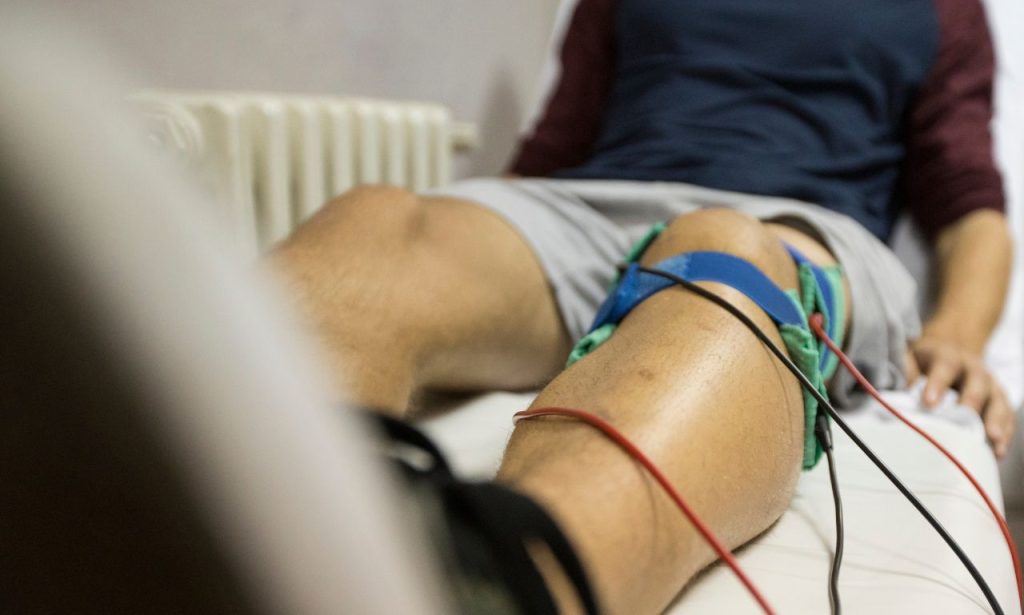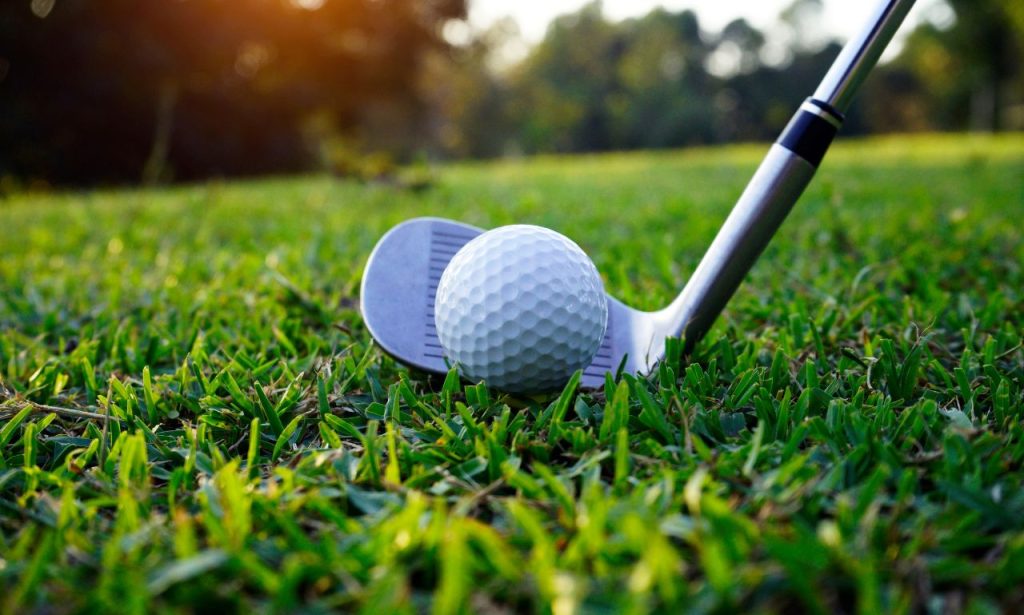Golf is more than just a sport; it’s a passion, a way to unwind, and a source of camaraderie. But if you’ve recently undergone ACL surgery, you’re probably wondering how long after ACL surgery can you golf. The journey from surgery to swinging a club again requires patience, dedication, and a structured plan. This comprehensive guide will walk you through the entire process, ensuring you return to the green safely and confidently.
Differences Between ACL and MCL Tears and Surgeries
Understanding the difference between ACL (Anterior Cruciate Ligament) and MCL (Medial Collateral Ligament) injuries is critical for tailoring your recovery plan. The ACL and MCL are both crucial stabilizing ligaments in your knee, but they serve different functions and are injured in distinct ways.
ACL Injuries
The ACL runs diagonally in the middle of your knee and prevents the tibia from sliding out in front of the femur. It also provides rotational stability. ACL injuries often occur during high-demand sports that involve sudden stops, jumps, or changes in direction, such as soccer, basketball, and skiing.
MCL Injuries
The MCL is located on the inner part of your knee and connects the femur to the tibia. It helps stabilize the knee by preventing it from bending inwards. MCL injuries are usually caused by direct impact to the outside of the knee, which pushes it inward, often seen in contact sports like football or hockey.
Surgical Differences

- ACL Surgery: Typically involves reconstructing the ligament using a graft, which can be autograft (from your own body) or allograft (from a donor).
- MCL Surgery: Less common as many MCL injuries heal with non-surgical treatments. When surgery is necessary, it usually involves repairing the ligament rather than reconstructing it.
Understanding these differences helps in setting realistic expectations for your recovery timeline and rehabilitation process.
Fastest Way to Recover from an ACL Tear Through Surgery
Recovery from ACL surgery is a marathon, not a sprint. The fastest way to recover involves a combination of surgical excellence, adherence to rehabilitation protocols, and a positive mindset.
Choosing the Right Surgeon
Selecting an experienced orthopedic surgeon who specializes in ACL reconstruction is crucial. Look for a surgeon with a high success rate and positive patient reviews. Discuss your specific goals, including your desire to return to golf, to ensure they tailor your surgery and recovery plan accordingly.
Pre-habilitation
Prehabilitation, or pre-surgery conditioning, can significantly impact your recovery speed. Engage in exercises that strengthen the muscles around your knee, improve your range of motion, and enhance your overall fitness. This prepares your body for surgery and can lead to a faster, smoother recovery.
Surgical Techniques
Modern surgical techniques, such as minimally invasive arthroscopy, can reduce recovery time. Your surgeon will choose the best technique based on your specific injury and overall health.
Post-Surgery Rehabilitation
Adhering to a structured rehabilitation program is crucial. This includes:
- Phase 1 (0-2 weeks): Focus on reducing swelling, regaining range of motion, and beginning weight-bearing exercises.
- Phase 2 (2-6 weeks): Emphasize strength training, balance exercises, and continued range of motion work.
- Phase 3 (6-12 weeks): Increase intensity of strength and stability exercises, introduce low-impact activities.
- Phase 4 (3-6 months): Gradual return to sports-specific training, including golf-specific exercises.
- Phase 5 (6-12 months): Full return to sport, with continued focus on strength, flexibility, and injury prevention.
Nutrition and Lifestyle
Maintain a balanced diet rich in protein, vitamins, and minerals to support healing. Stay hydrated and avoid smoking or excessive alcohol consumption, as these can impede recovery.
An Overview of ACL Surgery and the Recovery Process
ACL surgery involves several steps, each critical to ensuring a successful outcome.
The Procedure
- Preparation: You’ll be given anesthesia, and the surgical area will be prepped.
- Graft Harvesting: If an autograft is used, the surgeon will take tissue from another part of your body.
- Arthroscopic Surgery: Small incisions are made, and an arthroscope (a thin tube with a camera) is inserted to guide the procedure.
- Graft Placement: The damaged ACL is removed, and the graft is positioned and secured with screws or other devices.
- Closure: Incisions are closed with stitches or staples, and a bandage is applied.
Post-Surgery Recovery
- Immediate Post-Surgery: You’ll be monitored in the recovery room for a few hours before being discharged. Pain management and icing are crucial during this period.
- First Few Weeks: Focus on reducing swelling, controlling pain, and beginning gentle range of motion exercises. Use crutches to avoid weight-bearing.
- Physical Therapy: Start physical therapy within a few days to a week post-surgery. Your therapist will guide you through exercises to restore strength, flexibility, and stability.
- Return to Activity: Gradually reintroduce low-impact activities as recommended by your therapist. Follow their guidance closely to avoid setbacks.
Do’s and Don’ts After ACL Surgery
Navigating the post-surgery period involves understanding what to do and what to avoid to ensure a smooth recovery.
Do’s
- Follow Your Rehab Program: Adhere closely to your physical therapist’s instructions and attend all scheduled sessions.
- Use Ice and Elevation: Regularly ice your knee and keep it elevated to reduce swelling and pain.
- Stay Hydrated and Eat Well: Proper nutrition and hydration support healing.
- Gradually Increase Activity: Follow your therapist’s guidance on when and how to increase activity levels.
- Wear Your Knee Brace: Use your brace as instructed to provide stability and protect the graft.
Don’ts
- Avoid Weight-Bearing Too Soon: Follow your surgeon’s advice on when to start weight-bearing to avoid stressing the new graft.
- Don’t Skip Rehab Sessions: Missing sessions can delay your recovery and increase the risk of complications.
- Refrain From High-Impact Activities: Avoid activities that put excessive strain on your knee until fully cleared by your healthcare team.
- Don’t Ignore Pain: Pain can be a sign of overdoing it or a complication. Report any significant pain to your doctor or therapist.
- Avoid Smoking and Excessive Alcohol: These can impair healing and should be avoided.
Factors to Consider When Determining Readiness for Golf

Several factors influence your readiness to return to golf after ACL surgery.
Physical Readiness
- Strength: Adequate muscle strength, particularly in the quadriceps, hamstrings, and core, is essential.
- Stability: Your knee should be stable, with no signs of giving way during activities.
- Flexibility: Full range of motion in your knee is crucial for a proper golf swing.
Golf-Specific Considerations
- Swing Mechanics: Adapt your swing mechanics to reduce stress on your knee initially.
- Course Terrain: Start with flat courses to minimize strain on your knee.
- Walking vs. Cart: Consider using a golf cart initially to avoid excessive walking.
Psychological Readiness
- Confidence: Feel confident in your knee’s ability to handle the demands of golfing.
- Mental Preparedness: Be mentally prepared for the physical demands and potential setbacks.
Conclusion
Returning to golf after ACL surgery is a journey that requires patience, dedication, and a structured approach. By understanding the recovery process, following a comprehensive rehab program, and considering all factors, you can safely and confidently return to the sport you love. Remember, the key to a successful return is not rushing the process but ensuring your knee is fully ready to handle the demands of golfing.
ALSO READ: What to Eat After Periodontal Surgery
FAQs
If you experience pain, instability, or swelling in your knee during or after golfing activities, it’s a sign that you may be returning too soon. Consult your healthcare team for guidance.
Work with a golf coach or physical therapist to adjust your swing mechanics. Focus on reducing rotational stress and avoiding excessive twisting of the knee.
Yes, exercises that strengthen the quadriceps, hamstrings, glutes, and core are crucial. Balance and proprioception exercises also play a vital role in preparing your knee for the demands of golf.
Yes, wearing a functional knee brace during golf can provide additional support and stability, reducing the risk of re-injury.
Mental preparation is crucial. Confidence in your knee’s ability to handle the demands of golf and a positive mindset can significantly impact your recovery and performance.




